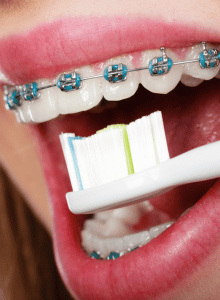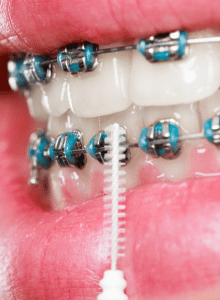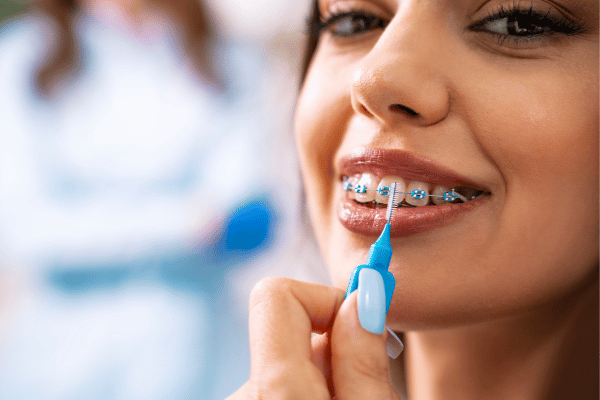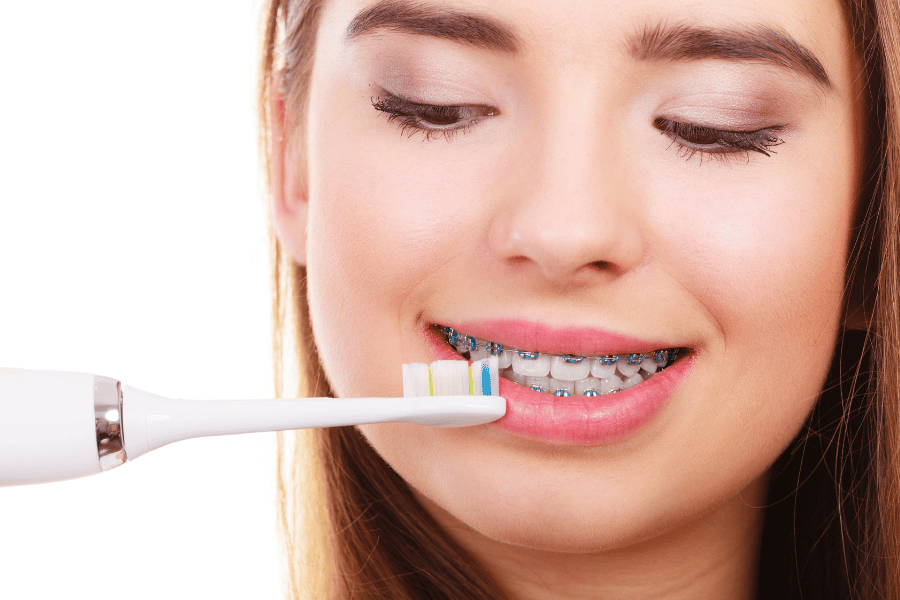Taking care of your teeth is always important, but when you have braces, it becomes even more crucial. Braces can help straighten your teeth and improve your smile, but they also make it a bit harder to keep your teeth clean. Food particles and plaque can get trapped in the wires and brackets, leading to stained teeth, cavities, and gum problems if not cleaned properly. This guide will walk you through the verified best practices for brushing your teeth with braces in 2024, ensuring your smile stays bright and healthy throughout your orthodontic journey.
The Importance of Dental Hygiene With Braces
When you have braces, maintaining good oral hygiene takes a bit more effort but is essential for preventing dental issues. Braces create numerous tiny spaces to trap food, and these trapped particles can lead to plaque buildup. Plaque is a sticky film of food and bacteria that can cause gum disease, tooth decay, and even tooth loss if not properly managed. The wires and brackets can also make it challenging to brush and floss effectively, but neglecting these steps can have long-term negative impacts on your oral health.
Challenges of Brushing With Braces
Brushing your teeth with braces requires more attention to detail compared to brushing without them. The main challenges include navigating around the brackets and wires, ensuring all food particles are removed, and avoiding damage to the braces. It’s easy for food to get stuck, and if not removed, this can lead to plaque buildup, which is harder to clean once it hardens. This makes it crucial to adopt a thorough brushing routine tailored to the needs of someone with braces.

Consequences of Poor Dental Hygiene With Braces
Neglecting dental hygiene while wearing braces can lead to several problems. Cavities are more likely to form when food particles and plaque are not removed effectively. Gum disease is another risk, as plaque buildup can irritate and infect the gums, leading to redness, swelling, and bleeding. Moreover, if plaque is not removed, it can lead to demineralization, which causes white spots on the teeth. These spots are permanent and can detract from the beauty of your smile once the braces come off. Staining and bad breath are also common issues that can arise from inadequate brushing and flossing with braces on.
How to Brush Your Teeth With Braces Properly
Maintaining a sparkling, healthy smile while wearing braces doesn’t have to be a daunting task. By following these best practices, you can ensure that your teeth and gums remain in top condition throughout your orthodontic treatment.
Choosing the Right Tools
The first step on how to brush your teeth with braces properly is to select the right tools. A soft-bristled toothbrush or an electric toothbrush with a special orthodontic head is ideal for getting around braces. Soft bristles are gentle on your gums and brackets, reducing the risk of damage. Fluoride toothpaste is recommended to help strengthen the enamel and prevent cavities. For areas that are particularly difficult to reach, consider using an interdental brush or a water flosser to remove food particles and plaque effectively.
Brushing Technique
A proper brushing technique is crucial when you have braces. Here’s a simple step-by-step guide on how to brush your teeth with braces on effectively:
- Preparation: Rinse your mouth with water to loosen any food particles stuck in and around the braces.
- Angle Your Brush: Hold your toothbrush at a 45-degree angle to your gums. This helps the bristles get beneath the wires and around the brackets.
- Gentle Circles: Use gentle, circular motions to clean all surfaces of each tooth. Don’t forget the backs of your teeth and the chewing surfaces.
- Brush Each Tooth: Pay special attention to each tooth, brushing around the brackets and along the gum line. Spend at least 2-3 minutes brushing to ensure a thorough clean.
- Rinse Thoroughly: After brushing, rinse your mouth well with water to remove any dislodged food particles or plaque.
Remember, it’s important to brush your teeth at least twice a day and especially after meals to minimize the risk of plaque buildup and dental problems. This routine not only keeps your teeth clean but also ensures your braces can do their job effectively.
Additional Care Tips

Diet Adjustments
What you eat plays a crucial role in maintaining oral hygiene and the integrity of your braces.
- Avoid hard foods like nuts, hard candies, and popcorn.
- Steer clear of sticky foods such as caramel, gum, and chewy candy.
- Cut down on sugary foods and drinks.
- Incorporate soft foods into your diet.
Regular Dental Checkups
Regular visits to your dentist and orthodontist are more important than ever when you have braces. These professionals can provide professional cleanings that remove plaque and tartar from places your toothbrush might not reach, especially around brackets and wires. Additionally, they can monitor the health of your teeth and gums, make necessary adjustments to your braces, and address any issues before they become serious problems. Aim for a dental checkup every six months, or more frequently if recommended by your dental care provider.
Dealing with Emergencies
Despite your best efforts, you might encounter emergencies such as loose or broken wires and brackets. In such situations, it’s important to know how to handle them until you can see your orthodontist. For loose or protruding wires, use the eraser end of a pencil to gently push them into a more comfortable position, or cover the end with orthodontic wax to prevent irritation. If a bracket breaks, save any pieces and schedule an appointment with your orthodontist for repair. Avoid trying to fix it yourself to prevent further damage.
“It’s essential to underscore the significance of diligent care. Regular brushing, flossing, and mindful food choices contribute not only to a seamless holiday experience but also to the overall success of your orthodontic treatment. Prioritizing these habits ensures a confident smile and optimal oral health.” -Dr. Athar
Common Mistakes to Avoid
Even with the best intentions, there are common pitfalls many people fall into when trying to maintain their dental hygiene with braces. Being aware of these mistakes can help you avoid them and keep your teeth and braces in top condition.
Not Brushing Long Enough
One of the most common mistakes is not spending enough time brushing. With braces, it’s recommended to brush for at least two to three minutes to ensure all food particles and plaque are removed. Rushing through your brushing routine can leave behind debris that increases the risk of dental issues.
Ignoring the Gum Line
Another frequent oversight is neglecting the gum line. The area around your gums is particularly susceptible to plaque buildup and requires careful attention when brushing. Make sure to angle your brush to clean both above and below the brackets at the gum line.
Forgetting to Replace Your Toothbrush
Braces can wear down a toothbrush faster than usual, leading to less effective brushing. Replace your toothbrush or electric toothbrush head every three months, or sooner if the bristles start to fray.
Skipping Dental Appointments
Missing regular dental checkups and cleanings can lead to undetected issues that could worsen over time. These appointments are crucial for keeping your teeth healthy and ensuring your orthodontic treatment is progressing as planned.
By incorporating these additional care tips into your routine and avoiding common mistakes, you can significantly enhance your oral hygiene practices while wearing braces. Not only will this help keep your teeth and gums healthy, but it will also ensure a smoother and more effective orthodontic treatment process.

Conclusion
Maintaining optimal dental hygiene with braces might seem like a daunting task at first. However, with the right tools, techniques, and habits, it’s entirely possible to keep your teeth and gums healthy throughout your orthodontic journey. Remember to choose the appropriate toothbrush and toothpaste, master the brushing and flossing techniques tailored for braces, and make necessary adjustments to your diet. Regular dental checkups are essential, not only for professional cleanings but also for ensuring your treatment is progressing as planned.
FAQs
1. How often should I brush my teeth with braces?
It’s recommended to brush your teeth at least twice a day when you have braces—once in the morning and once before bed. However, it’s ideal to brush after every meal or snack to prevent food particles from getting trapped in your braces, which can lead to plaque buildup and cavities.
2. Can I use an electric toothbrush with braces?
Yes, you can use an electric toothbrush with braces. In fact, many find it easier to thoroughly clean around brackets and wires with an electric toothbrush. Just ensure you use a brush head that’s soft and compatible with braces, and be gentle to avoid damaging your braces.
3. What should I do if I can't brush my teeth immediately after eating?
If you can’t brush your teeth right away after eating, rinse your mouth with water to help dislodge any food particles stuck in your braces. You can also use a fluoride mouthwash for extra protection against cavities until you’re able to brush your teeth.
4. How do I handle tooth sensitivity?
Tooth sensitivity is a common issue for braces wearers. Using a toothpaste designed for sensitive teeth can help alleviate this problem. Additionally, avoid foods and drinks that are extremely hot or cold. If sensitivity persists, consult with your dentist for further advice.
